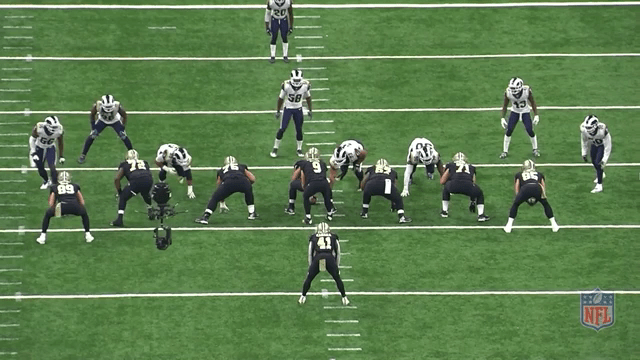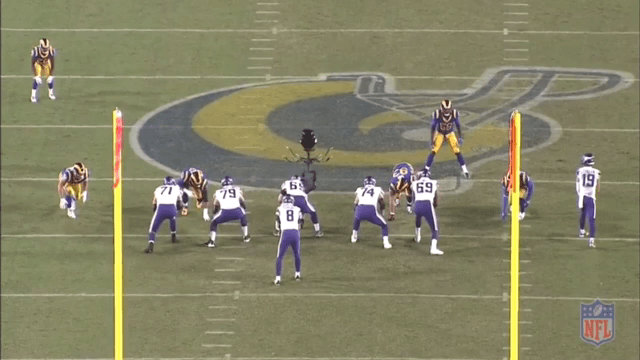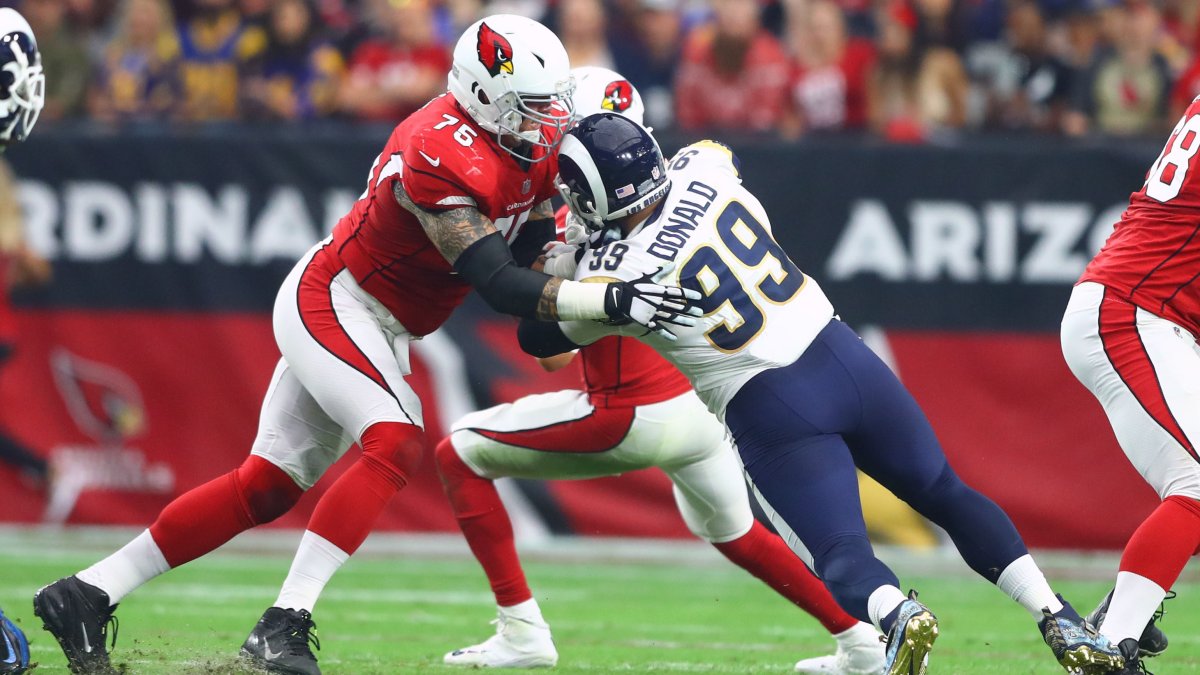The cornerstone of PFF's grades and the philosophical basis for play-by-play grading is the belief that consistency is paramount in football. We believe that repeatedly executing one’s assignment is more valuable in the long run than highlight-reel plays. No area of the football field does this ring true more so than in the trenches. Pancakes and sacks look impressive, but they make up an incredibly small portion of a player’s overall snaps and are often times a matter of luck. We try as hard as possible to isolate in our grading that which a player can control and not downgrade/reward them for things out of their control.
Let’s examine a little closer exactly what that means.
The key to properly evaluating performance on any given play is understanding assignments. A common criticism of PFF is that we can’t possibly know what those assignments are, and thus can’t accurately evaluate. While the claim that we can’t know with 100% certainty a player’s assignment is valid, it doesn’t logically lead to the conclusion of not being able to accurately evaluate. There’s two reasons for this. The first is that the amount of times a player’s assignment is not glaringly obvious to a trained observer is minimal – especially with 1,000-snap sample sizes over a season. The second is that every single independent observer suffers from the exact same lack of inside information. That means that when a GM drafts a quarterback No. 1 overall or signs a cornerback to a $60-million deal, he too does not know if that player has been executing what’s asked of him. Taken to its logical conclusion, if we can’t evaluate players without knowing the play call then no one outside of the player's specific organization can.
The fact of the matter is, the game of football isn’t nearly as complex as people make it seem. Each player has a simple assignment on every play. If they didn’t, they’d get bogged down thinking in a game where speed is everything. No one is reinventing the wheel schematically, and you’ll see the same coverages/run schemes/pass concepts/etc. hundreds of times every weekend. If we can’t say with 95% certainty we know what the player was supposed to be doing on the play, the player receives a neutral 0 grade.
Run Game
Gap control is the name of the game in run defense. Each defensive lineman is responsible for a gap (sometimes two) and the vast majority of the time, that gap is the one he’s lined up in. Some elite players like Aaron Donald and J.J. Watt are given the freedom to get out of their gap in an effort to make more plays, but your run-of-the-mill defensive tackle better hold his ground in his gap. Get taken out of your gap, widen that gap considerably or get pushed well back off the line of scrimmage and the defender is looking at a downgrade. Get past the offensive lineman on contact, squeeze your gap down or rock the offensive lineman into the backfield and you’re looking at a positive grade.
Here's an example of a positive play in run defense courtesy of Donald.

Trench grading is almost always dichotomous in nature. A positive for a defender means a negative for the offensive lineman and vice versa. There are obvious exceptions like an offensive lineman running the wrong play or a defender taking himself out of a gap voluntarily, but for most 1-on-1 interactions, the scale will be equal.
Scale is the key word there. We differentiate between simply doing your job and going above and beyond. While a position coach might give an offensive lineman a positive for engaging a defender and using his hands well, we look at what both players are trying to do on a given play. If that defender doesn’t cede ground and is still holding his gap, both players will receive a neutral 0 grade on the play. There’s also a difference between an offensive lineman being stood up in his tracks (a likely -0.5) and him being immediately swam at the snap (a likely -1.5).
The -2.0 to +2.0 scale allows for multiple levels of execution to be captured over the course of a game.
Pass-rushing/blocking
Pass-rushing is one of the most straight-forward and well-defined areas of our grading system. It’s also been the most consistently predictive. We emphasize wins for defensive linemen and avoiding losses for offensive linemen. Each snap a defensive lineman rushes, he receives a fraction of a negative (based on leaguewide expectations in that situation) while an offensive lineman receives a fraction of a positive. This results in per-snap efficiency being the most important part of each player's overall grade.
Pass rushes can vary from +0.5 to +1.0 to +1.5 depending on how quickly a defender defeats the block and gets to the top of the pocket in order to pressure the quarterback. Unblocked pressures will not receive as high of a grade as one that involves a quick one-on-one win.
Here's a great example of a quick pass-rush win that earned an extremely positive grade in our system. Again, it comes Donald.

The initial win is crucial, and that, combined with speed to the quarterback and finishing the play, will make up a pass-rusher's grade on a given play. This is why total pressure ranks can and will differ greatly from pass-rush grades. It’s also the reason why we keep saying Donald is unlike any other defensive tackle we’ve ever seen. The Rams defender may have only finished the season with 11 sacks, but he had 63 pass-rushes graded at +1.0 or higher. The next closest interior defender was Jurrell Casey with 39.
Totaling the grades
After the game is over, the grades are tallied and a normalization factor is applied. Exactly how big the normalization depends on a number of play-specific elements (depth of drop, QB rollouts, down and distance, alignment, etc.). It isn’t uncommon for a multi-sack performance to receive an average or even poor grade from us for the reasons above. Ultimately, we’re trying to quantify talent and the ability to win 1-on-1 interactions consistently is more indicative of that than any sack or hit total.
No grading system is ever going to be perfect, and we readily admit that ours is constantly trying to get better. Offensive line versus defensive line though is about as pure a grading scale as there is in the game. The assignments are obvious, all that matters is can you beat the man in front of you.
Quantifying that ability will always be our goal.



 © 2025 PFF - all rights reserved.
© 2025 PFF - all rights reserved.